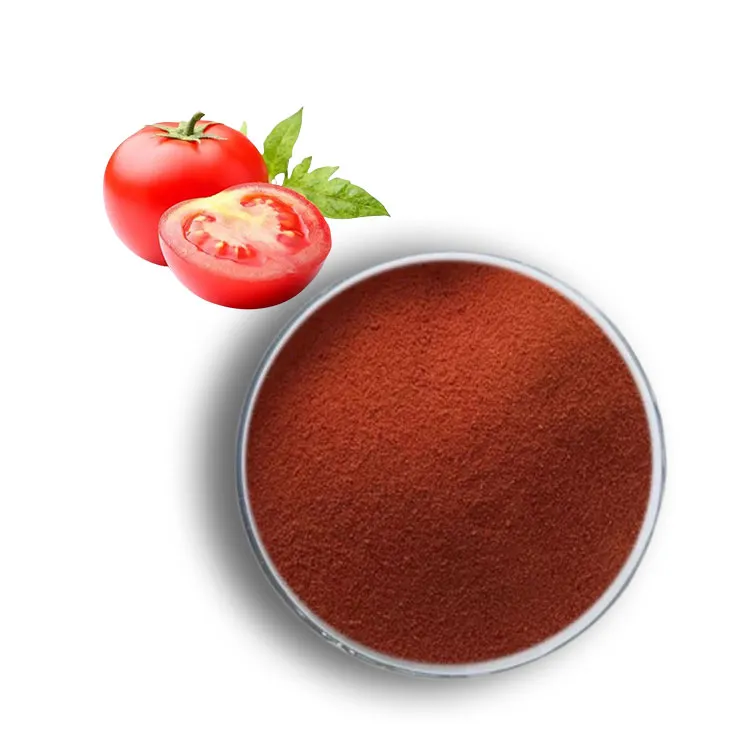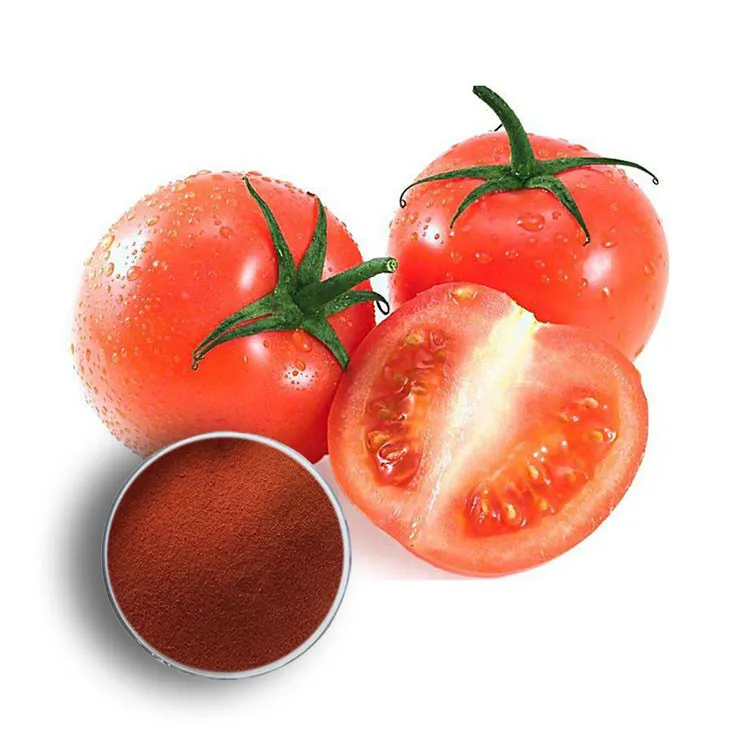- 0086-571-85302990
- sales@greenskybio.com
The Best Lycopene: A Guide to Selecting the Best Lycopene.
2024-11-12

Introduction
Lycopene is a carotenoid pigment that gives tomatoes their characteristic red color. It has been the focus of numerous scientific studies due to its powerful antioxidant properties and potential health benefits. In this guide, we will explore the different types of Lycopene available, including natural and synthetic forms, and discuss the factors that can help you select the best Lycopene for your health needs.

What is Lycopene?
Lycopene is a member of the carotenoid family, which also includes beta - carotene, lutein, and zeaxanthin. It is a fat - soluble compound that is found in high concentrations in tomatoes, but can also be found in other fruits and vegetables such as watermelons, pink grapefruits, and apricots. Lycopene is known for its ability to scavenge free radicals in the body, which can cause oxidative stress and damage to cells. By neutralizing these free radicals, lycopene may help reduce the risk of chronic diseases such as cancer, heart disease, and macular degeneration.

Natural vs. Synthetic Lycopene
Natural Lycopene
- Natural lycopene is derived from plant sources such as tomatoes. It is typically obtained through processes such as extraction from ripe tomatoes or tomato by - products.
- One advantage of natural lycopene is that it is often accompanied by other beneficial compounds found in the plant source. For example, tomatoes contain vitamins C and E, potassium, and fiber, which may work synergistically with lycopene to enhance its health effects.
- However, the extraction and purification of natural lycopene can be more complex and costly compared to synthetic lycopene. This can result in higher prices for products containing natural lycopene.
Synthetic Lycopene
- Synthetic lycopene is produced through chemical synthesis in a laboratory. It has a similar chemical structure to natural lycopene but is typically more pure and consistent in its composition.
- Synthetic lycopene can be produced in large quantities at a relatively lower cost compared to natural lycopene. This makes it more accessible for use in various products such as dietary supplements and food additives.
- However, some consumers may prefer natural products and may be concerned about the potential long - term effects of consuming synthetic substances. Additionally, synthetic lycopene may not have the same combination of associated compounds as natural lycopene.

Bioavailability of Lycopene
Bioavailability refers to the proportion of a nutrient that is absorbed by the body and is available for physiological functions. The bioavailability of lycopene can be influenced by several factors:
Food Matrix
- When lycopene is consumed in whole foods such as tomatoes, its bioavailability may be affected by the food matrix. For example, the cell walls of tomatoes can limit the release and absorption of lycopene. Cooking tomatoes can break down these cell walls and increase the bioavailability of lycopene.
- Combining lycopene - rich foods with sources of healthy fats can also enhance its bioavailability. Lycopene is fat - soluble, so consuming it with fats helps the body absorb it more effectively.
Form of Lycopene
- Different forms of lycopene may have different bioavailabilities. For example, lycopene in the form of lycopene crystals may have lower bioavailability compared to lycopene in a more soluble form such as lycopene oleoresin.
- Some dietary supplements may use special formulations to improve the bioavailability of lycopene. These can include encapsulation techniques or the addition of ingredients that enhance absorption.
Extraction Methods of Lycopene
The extraction method used to obtain lycopene can affect its quality and purity. There are several common extraction methods:
Solvent Extraction
- Solvent extraction is a widely used method for extracting lycopene from plant sources. In this method, a solvent such as hexane or ethyl acetate is used to dissolve lycopene from the plant material. The solvent is then removed to obtain the lycopene extract.
- One advantage of solvent extraction is that it can be highly efficient in extracting lycopene. However, it is important to ensure that the solvent is completely removed to avoid any potential toxicity from residual solvents.
Supercritical Fluid Extraction
- Supercritical fluid extraction uses a supercritical fluid, usually carbon dioxide, as the extraction medium. Supercritical carbon dioxide has properties between those of a gas and a liquid, which allows it to effectively extract lycopene while being a relatively "clean" and non - toxic extraction method.
- This method can produce high - quality lycopene extracts with good purity levels. However, it requires specialized equipment and can be more costly compared to solvent extraction.
Purity Levels of Lycopene
Purity levels of lycopene can vary depending on the source and extraction method. Higher purity levels are generally associated with better quality, but it is also important to consider other factors:
Importance of Purity
- High - purity lycopene is less likely to be contaminated with other substances, which can be important for safety and efficacy. For example, contaminants in lycopene extracts could potentially interact with the lycopene or cause adverse effects.
- In some applications, such as in pharmaceutical research or high - end dietary supplements, high - purity lycopene may be required to ensure accurate dosing and reliable results.
Measuring Purity
- Purity of lycopene can be measured using various analytical techniques such as high - performance liquid chromatography (HPLC). HPLC can separate and quantify the different components in a lycopene sample, allowing for accurate determination of its purity.
- When evaluating lycopene products, it is advisable to look for products that have been tested for purity and have clear labeling indicating the purity level.
How to Select the Best Lycopene for Your Health Needs
When choosing the best lycopene for your health needs, consider the following factors:
Your Health Goals
- If you are looking to reduce the risk of a specific disease such as cancer or heart disease, you may want to consider a lycopene supplement with a high bioavailability and purity level. Look for products that have been studied for their effectiveness in relation to your health concern.
- If you are generally interested in maintaining good health and antioxidant protection, consuming lycopene - rich foods such as tomatoes may be sufficient. However, if you prefer a supplement, choose one that is made from natural sources and contains other beneficial nutrients.
Budget
- Natural lycopene products are often more expensive than synthetic ones due to the cost of extraction and purification. If cost is a factor, synthetic lycopene may be a more affordable option. However, consider the potential trade - offs in terms of associated compounds and consumer preference.
- When comparing prices of lycopene products, also look at the quantity and quality of the lycopene provided. A cheaper product may not necessarily be the best value if it has a lower purity level or bioavailability.
Source and Quality
- Look for lycopene products that come from reliable sources. For natural lycopene, check if the product is sourced from high - quality tomatoes or other plant sources. For synthetic lycopene, ensure that it is produced in a reputable laboratory following good manufacturing practices.
- Check for information on the extraction method and purity level of the lycopene. Products that use clean extraction methods such as supercritical fluid extraction and have a high purity level are generally of better quality.
Conclusion
Lycopene is a valuable nutrient with many potential health benefits. Whether you choose natural or synthetic lycopene, it is important to consider factors such as bioavailability, extraction method, purity level, and your own health goals and budget. By making an informed decision, you can select the best lycopene to support your overall health and well - being.
FAQ:
What are the main differences between natural and synthetic lycopene?
Natural lycopene is derived from natural sources like tomatoes, while synthetic lycopene is chemically produced. Natural lycopene often comes with other beneficial compounds found in its source, which may contribute to its overall effectiveness. Synthetic lycopene may have a more consistent chemical structure and potentially higher purity in some cases. However, some people prefer natural sources due to the perception of fewer side effects and a more holistic nutritional profile.
How does the source of lycopene affect its quality?
The source of lycopene can significantly impact its quality. For example, lycopene from fresh, ripe tomatoes may have a different quality compared to lycopene from processed tomato products. If the source is of high quality, rich in nutrients, and free from contaminants, the lycopene obtained from it is likely to be of better quality. Also, different plant varieties may contain varying levels of lycopene, and the way they are grown (such as organic vs. non - organic) can also play a role in the final quality of the lycopene.
What is bioavailability in relation to lycopene and why is it important?
Bioavailability refers to the proportion of a nutrient, in this case lycopene, that is absorbed by the body and can be used effectively. It is important because even if a product contains a high amount of lycopene, if it has low bioavailability, the body may not be able to benefit from it fully. Factors that affect lycopene bioavailability include the form in which it is present (e.g., whether it is in a food matrix or a supplement), the presence of other substances that can enhance or inhibit absorption, and the individual's own digestive and metabolic functions.
How do different extraction methods influence the quality of lycopene?
Different extraction methods can have diverse effects on the quality of lycopene. Some extraction methods may be more gentle and preserve the integrity of lycopene and other associated beneficial compounds. For example, solvent - based extraction methods need to be carefully controlled to avoid leaving behind harmful solvent residues. Supercritical fluid extraction is considered a more advanced method that can often result in a purer form of lycopene with higher quality. However, the cost and complexity of different extraction methods also vary, which can impact the availability and price of high - quality lycopene products.
How can one determine the purity level of lycopene?
Determining the purity level of lycopene can be complex. Laboratory analysis is often required. Techniques such as high - performance liquid chromatography (HPLC) can be used to accurately measure the amount of lycopene in a sample and identify any impurities. Product labels may also provide some indication of purity, but these should be carefully evaluated as they may not always be completely accurate. Additionally, the reputation of the manufacturer and the source of the lycopene can give some clues about its likely purity level.
Related literature
- Title: The Role of Lycopene in Health and Disease"
- Title: "Lycopene: Sources, Extraction, and Bioavailability"
- Title: "Natural vs. Synthetic Lycopene: A Comparative Analysis"
- ▶ Hesperidin
- ▶ citrus bioflavonoids
- ▶ plant extract
- ▶ lycopene
- ▶ Diosmin
- ▶ Grape seed extract
- ▶ Sea buckthorn Juice Powder
- ▶ Beetroot powder
- ▶ Hops Extract
- ▶ Artichoke Extract
- ▶ Reishi mushroom extract
- ▶ Astaxanthin
- ▶ Green Tea Extract
- ▶ Curcumin Extract
- ▶ Horse Chestnut Extract
- ▶ Other Problems
- ▶ Boswellia Serrata Extract
- ▶ Resveratrol Extract
- ▶ Marigold Extract
- ▶ Grape Leaf Extract
- ▶ blog3
-
Cranberry Plants and Skin - care Products.
2024-11-12
-
Red Wine Extract
2024-11-12
-
Epimedium extract powder
2024-11-12
-
Pueraria Lobata Extract
2024-11-12
-
Cactus Extract
2024-11-12
-
Curcuma Longa Extract/Turmeric extract
2024-11-12
-
Green coffee bean Extract
2024-11-12
-
Lycopene
2024-11-12
-
Selenium yeast
2024-11-12
-
Cocoa Extract
2024-11-12
-
Carrageenan Extract Powder
2024-11-12




















